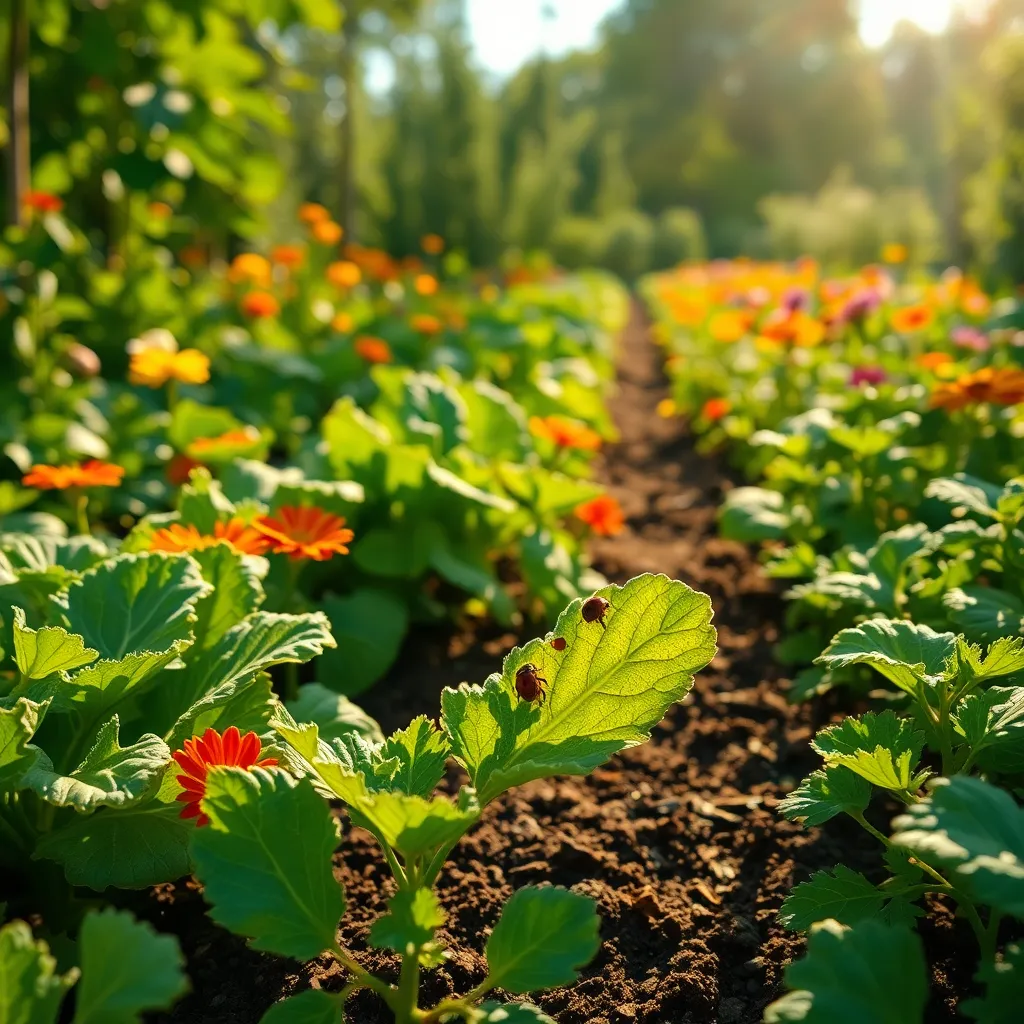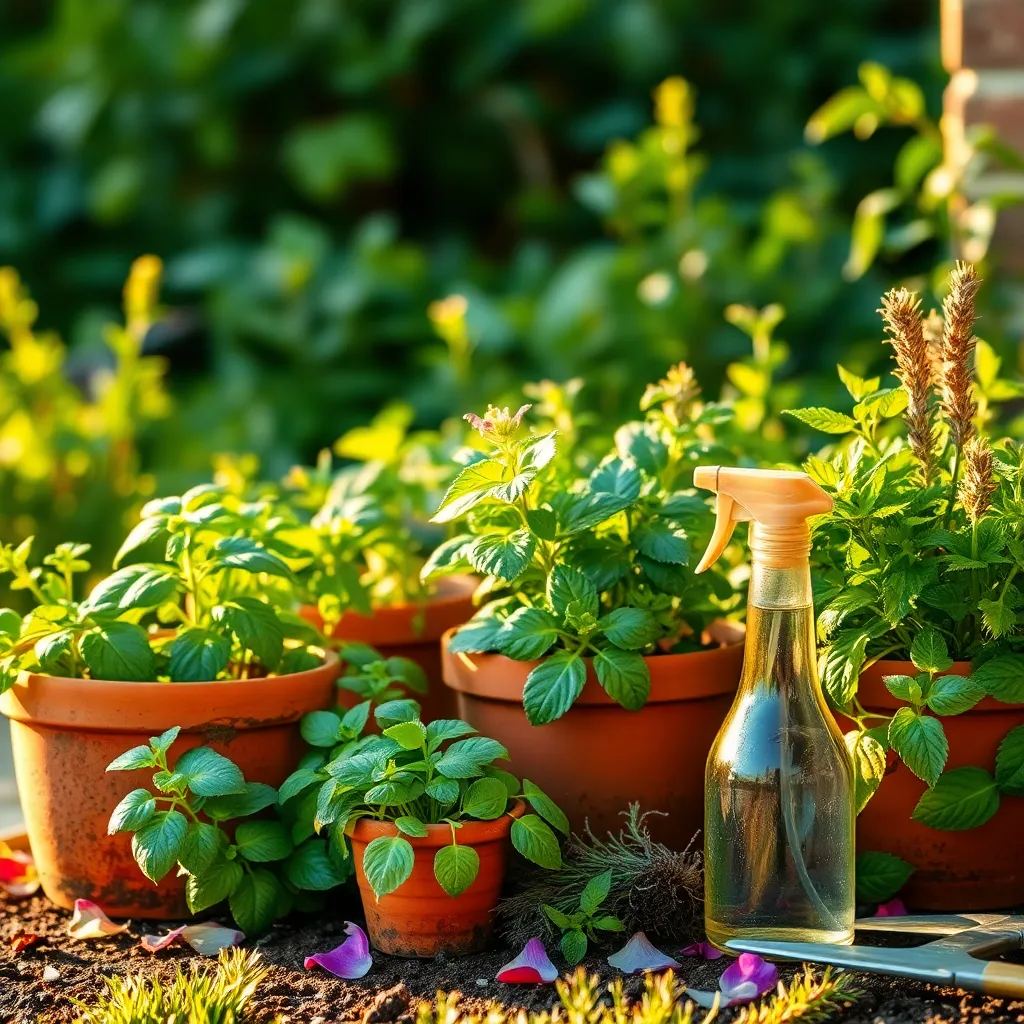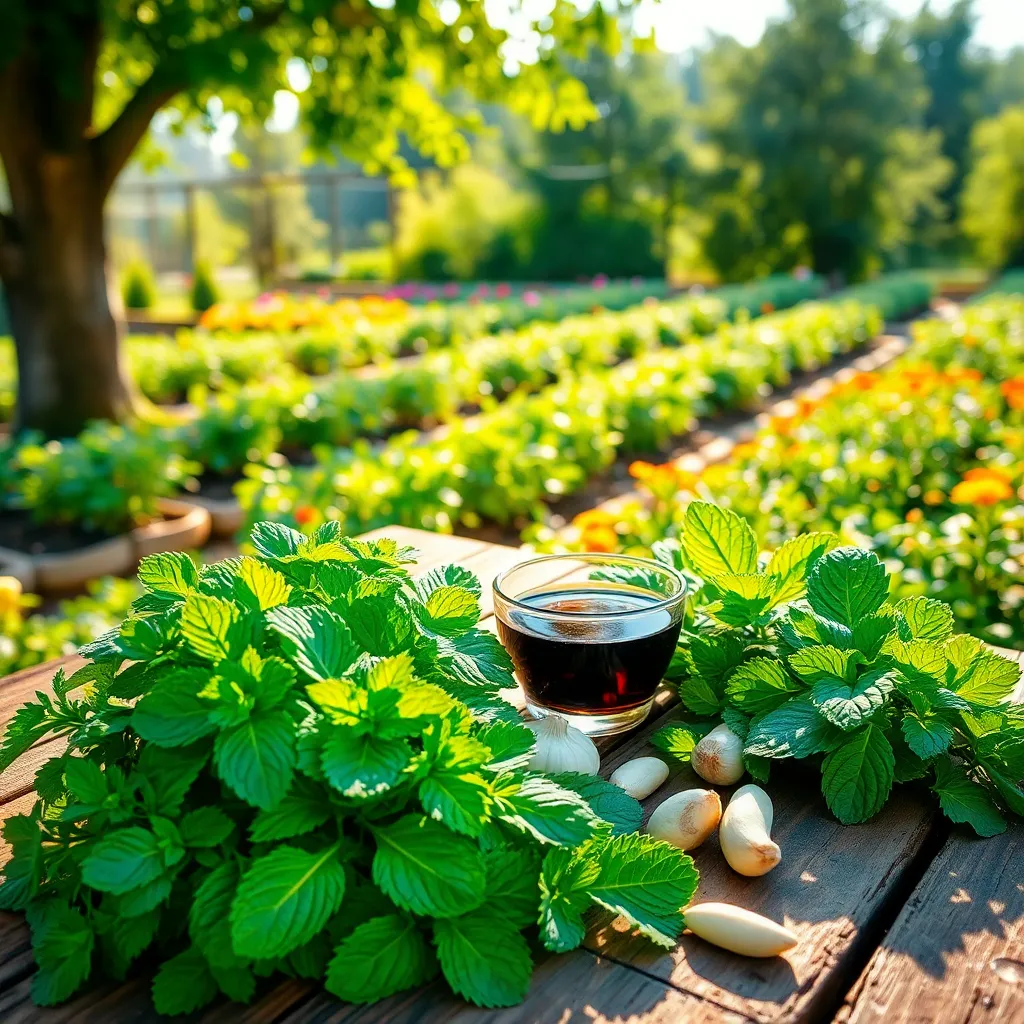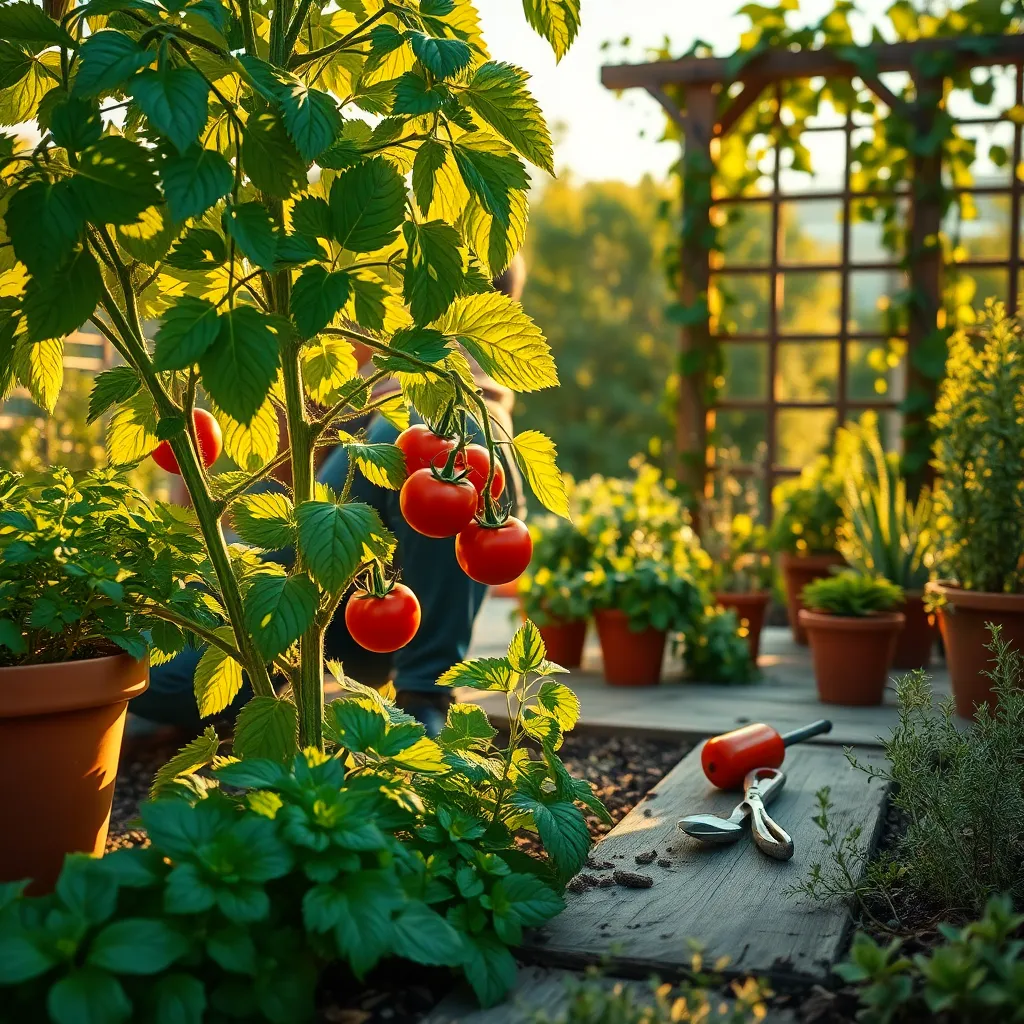In the vibrant world of gardening, the challenge of keeping pests at bay without compromising the health of your plants can sometimes feel like a delicate balancing act. Whether you’re a novice just planting your first seeds or a seasoned gardener with years of green-thumb wisdom, the allure of plant-based pesticides offers a sustainable and effective solution to this age-old problem. Embracing these natural alternatives not only nurtures your garden’s ecosystem but also promotes a healthier environment for you and your family.
As we dive into the realm of plant-based pesticides, you’ll discover that this approach is as diverse and dynamic as your garden itself. You’ll learn how to harness the potency of common household ingredients and botanicals to deter pests while supporting the vibrant life in your garden beds. From garlic sprays to neem oil, these methods are not just kinder to the earth; they are also surprisingly simple to implement. Together, we’ll explore practical tips and techniques that will empower you to protect your plants without resorting to harsh chemicals.
In this guide, we’ll unravel the secrets behind some of nature’s most powerful pest deterrents and how you can integrate them into your gardening routine. You’ll gain insights into the benefits of each method, understanding not just how to use them, but why they work. With this knowledge, your garden can thrive in harmony with nature, turning what might seem like a daunting task into a rewarding journey. By the end of this article, you’ll be equipped with the confidence and know-how to cultivate a flourishing, pest-resistant garden with ease.
Identify Common Garden Pests

Identifying common garden pests is crucial for maintaining healthy plants. Familiarize yourself with pests like aphids, slugs, and caterpillars, as these are among the most frequent invaders.
To spot aphids, look for clusters of tiny, soft-bodied insects on the undersides of leaves. These pests are often green but can also be black, brown, or pink, and they suck sap from plants, causing leaves to yellow and curl.
Slugs leave behind a telltale slimy trail and are most active during damp, cool conditions. They chew irregular holes in leaves and are particularly fond of young, tender plants, so keep an eye out for damage on new growth.
Caterpillars can be identified by the holes they chew into leaves and their distinctive appearance, often in shades of green or brown. Regularly inspecting your plants helps you catch infestations early, allowing for effective management with plant-based pesticides.
Select Suitable Plant-Based Pesticide

When selecting a suitable plant-based pesticide, it’s crucial to consider the specific pest you’re dealing with. Neem oil is a popular choice because it effectively targets a broad range of pests, including aphids, mites, and whiteflies. It is derived from the seeds of the neem tree and works by disrupting the life cycle of insects, making it a natural and environmentally friendly option.
For gardeners dealing with soft-bodied insects like aphids and caterpillars, insecticidal soap can be a great choice. It works by penetrating the insect’s outer shell and causing dehydration, leading to their demise. This method is safe for most plants and can be applied directly to the affected areas in the early morning or late afternoon to prevent leaf burn.
Another effective plant-based pesticide is diatomaceous earth, which works by physically damaging the exoskeletons of insects. This natural powder is made from fossilized remains of tiny, aquatic organisms called diatoms. To use it, simply dust it onto the soil or plant surfaces, ensuring it remains dry to maintain its effectiveness.
Gardeners looking for a specific solution for spider mites might consider using rosemary oil. This essential oil, when diluted with water, acts as a natural miticide and can be sprayed onto leaves to suffocate the mites. Ensure even coverage by spraying both the tops and undersides of leaves, and reapply every few days until the infestation is under control.
Prepare Pesticide Solution

Once you have selected the right plant-based pesticide, it’s time to prepare your solution. Start by gathering all necessary materials, including a clean spray bottle, water, and the plant extract or essential oil you will be using.
Read the instructions on the product carefully to determine the correct dilution ratio. This ensures that your solution is both safe and effective for your plants.
Typically, you will mix one part of the plant-based pesticide with ten parts of water. Use lukewarm water to help the solution mix thoroughly and evenly.
For those with experience, consider adding a few drops of a natural emulsifier like dish soap to enhance adherence to plant surfaces. This can improve the efficacy of your pesticide by ensuring it sticks to leaves and stems.
Before applying the solution, test it on a small area of the plant to check for any adverse reactions. It’s crucial to monitor the plant over the next 24 hours to ensure there is no damage.
Once you’ve confirmed the solution is safe, proceed to apply it during the cooler parts of the day, such as early morning or late afternoon. This helps to minimize evaporation and maximizes the pesticide’s effectiveness.
Remember to reapply the solution every 7–10 days, or after heavy rainfall, to maintain its protective barrier. Consistent application is key to managing pests without harming your plants.
Apply Pesticide Evenly

When applying plant-based pesticides, it’s essential to use a method that ensures even coverage of all plant surfaces. Begin by selecting a suitable sprayer, such as a pump-action or hose-end sprayer, which provides a fine mist for uniform distribution.
Ensure the leaves are thoroughly coated, focusing on both the top and underside where pests often hide. For small plants and intricate areas, a hand-held spray bottle offers precise control and helps avoid wasteful overspray.
Timing is critical; apply the pesticide during early morning or late afternoon when temperatures are cooler and the sun is less intense. This practice reduces evaporation and allows the pesticide to remain effective for a longer period, increasing its pest control efficacy.
For larger gardens or densely planted areas, consider using a backpack sprayer. This tool allows for consistent pressure and more extensive coverage, ensuring every plant receives the protective benefits of the pesticide.
Monitor Plant Health Regularly

Regular monitoring of plant health is crucial to ensure the effectiveness of your plant-based pesticides. Start by inspecting the leaves, stems, and soil for any signs of distress, such as wilting, discoloration, or unusual spots.
It’s important to check the undersides of leaves where pests often hide. Use a magnifying glass for a closer look at any small pests or eggs that might be present.
Consistency is key when it comes to monitoring; aim to check your plants at least once a week. This practice helps you catch any potential problems early, allowing for quick intervention.
In addition to visual inspections, pay attention to the overall growth and vigor of your plants. Changes in growth rate or leaf size can be indicative of underlying issues, such as nutrient deficiencies or pest infestations.
For watering, ensure that your plants are receiving the right amount based on their specific needs and soil type. Well-draining soil is often best, as it prevents waterlogging, which can lead to root rot.
Advanced gardeners might consider keeping a journal to record observations and track changes over time. This can help identify patterns and determine the long-term effectiveness of your plant-based pesticides.
Conclusion: Growing Success with These Plants
In exploring the world of plant-based pesticides, we’ve uncovered five key relationship concepts that enrich our connections with nature and each other. First, understanding the importance of natural balance teaches us to respect boundaries in relationships. Second, recognizing the power of organic solutions mirrors the value of authenticity and honesty. Third, the patience required in nurturing plant defenses parallels the importance of nurturing trust and communication. Fourth, adapting to the ever-changing needs of a garden reminds us to remain flexible and open in our interactions. Lastly, the shared responsibility of protecting the environment reflects the collaborative effort needed to maintain healthy relationships.
As a practical next step, try implementing one plant-based pesticide in your garden, observing not just its effects on your plants, but also how it resonates with the care and effort you invest in your personal relationships. Save or bookmark this article as a handy reference to revisit these insights whenever you need a reminder.
Remember, successful relationships, like thriving gardens, require continuous attention and care. By embracing these principles, you’re setting the stage for a flourishing relationship with both your environment and loved ones. Take action today, and witness the growth of your connections tomorrow.
